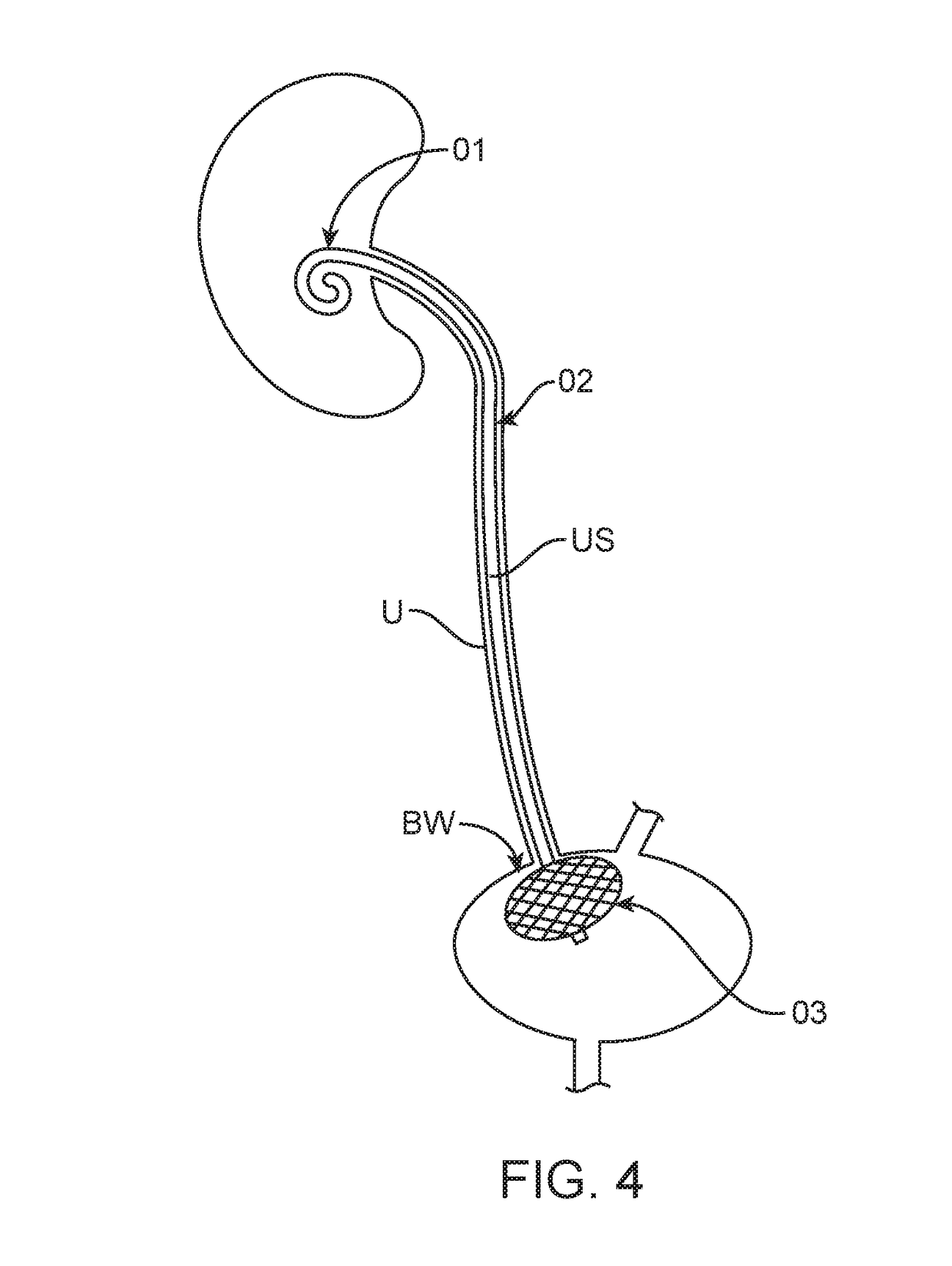Ureteral stent with a non-irritating and shock-absorbing bladder anchor
a ureteral stent and non-irritating technology, applied in the field of ureteral stents with non-irritating and shock-absorbing ureteral stents, can solve the problems of increasing the difficulty of removal, increasing the discomfort of patients, and a need to pass urine frequently, so as to prevent the calcification of the mesh, the effect of slowing down or slowing down
- Summary
- Abstract
- Description
- Claims
- Application Information
AI Technical Summary
Benefits of technology
Problems solved by technology
Method used
Image
Examples
Embodiment Construction
[0030]Some embodiments of the present invention are illustrated as an example and embodiments are not limited by the figures of accompanying drawings:
[0031]FIG. 1FIG. 1 illustrates the braid construction of a flexible, self-expanding stent such as the Wallstent® manufactured by Boston Scientific Corporation WS. The braid is made out of a flexible small diameter metal wire such as shape memory Nitinol. The combination makes this particular braid very soft and flexible. In this particular braid construction, the braid is created on a slightly larger mandrel than the desired final outer diameter. The wire size is in the range of outer diameter 0.001″ to 0.007″. The pick count of the braid is selected between 20 PPI to 80 PPI. The braid configuration and wire parameters are selected to make sure the braid will form a desired cylindrical shape having a diameter sufficient to slightly dilate a target lumen and, to attempt to maintain its position in the lumen despite fluid flow, patient m...
PUM
 Login to View More
Login to View More Abstract
Description
Claims
Application Information
 Login to View More
Login to View More - R&D
- Intellectual Property
- Life Sciences
- Materials
- Tech Scout
- Unparalleled Data Quality
- Higher Quality Content
- 60% Fewer Hallucinations
Browse by: Latest US Patents, China's latest patents, Technical Efficacy Thesaurus, Application Domain, Technology Topic, Popular Technical Reports.
© 2025 PatSnap. All rights reserved.Legal|Privacy policy|Modern Slavery Act Transparency Statement|Sitemap|About US| Contact US: help@patsnap.com



